




Have you ever wondered how long you need to wait before the tiffin bell rings or after what time you can watch the next episode of a cartoon show again? These questions can be answered by understanding the concept of time intervals.
The amount of time elapsed between any two given points in time is known as the time interval. Time intervals can be singular or multiple, based on the purpose of noting or marking them. For instance, the time interval between 8 a.m. and 1 p.m. is 5 hours, which is singular or a one time count, and the time intervals between the start and end of periods in schools or colleges can be of an hour.
Units for Measuring Intervals of Time
Different units are used for measuring different intervals of time based on purpose and span. For instance, if you are to measure the time intervals between your birthdays, you will want to measure them in years, since your birthday comes every year. However, if you wish to measure the time left for your upcoming birthday if that is in less than a year, you will prefer measuring it in days, weeks, or months. Another example of purposeful measurement of time intervals is while cooking. When you cook a dish, it is important that you keep a proper note of the time intervals after which you are required to perform certain actions, like stirring, straining, adding water, hiring or lowering the flame, etc., For such tasks, time intervals can be measured in seconds, minutes, or hours.
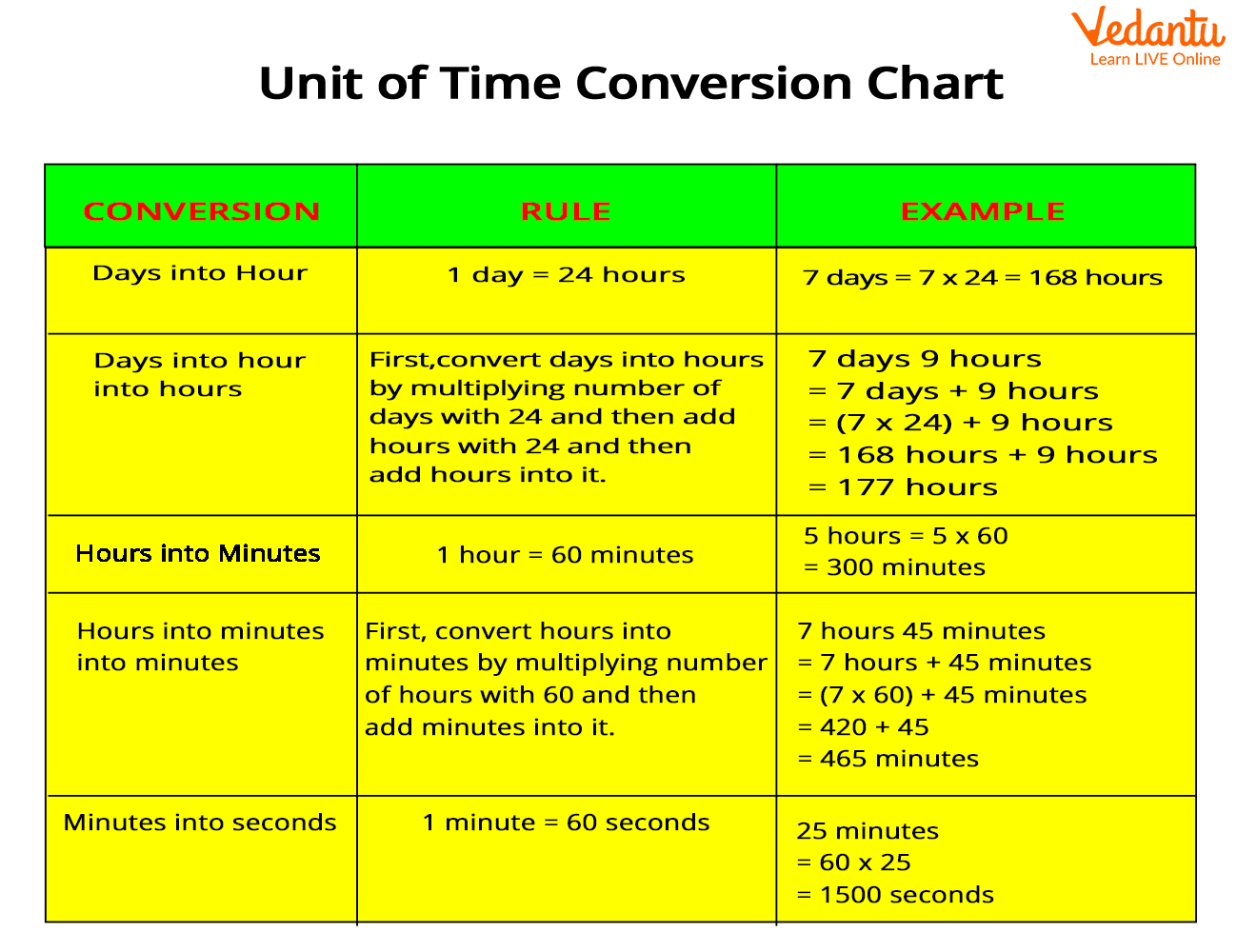
Time Interval Conversion Chart
Some Other Ways to Measure Time Intervals
History has taught us a lot of things; noting time is one of such lessons that humans have been using since ages. Among various interesting methods for measuring time intervals, some are still used either as convention or as fancy ways of traditional showcasing. Before watches and clocks were invented, people used various other ways to keep track of intervals of time. In ancient times, the utilisation of natural resources was in vogue, such as the position of the sun in the sky. Some devices used to measure time intervals in earlier ages are as follows:
Obelisk - Ancient Egyptians used to build tall, detailed, pyramidic monuments, known as obelisks. These were constructed primarily to commemorate an event or as honorary presentation to their Gods. Their secondary purpose, however, was to tell the time with the position of the shadow that they cast on the ground. These obelisks might not have been as accurate as the current technology, but they did solve the purpose of telling them when it was morning and when it was afternoon.
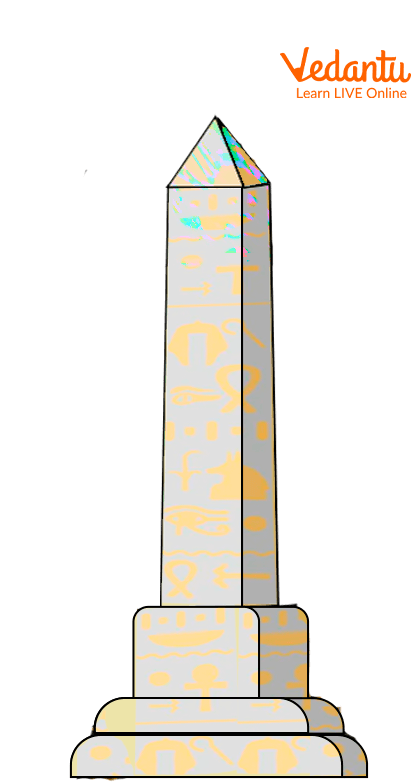
Obelisk
Sundial - The Egyptians succeeded in making more accurate measurements of time by creating a shadow clock or sundial. Using a sundial, they could divide the time into smaller periods called hours. The measurement improved with the implementation of length changes in the shadow, and not just the relative position.
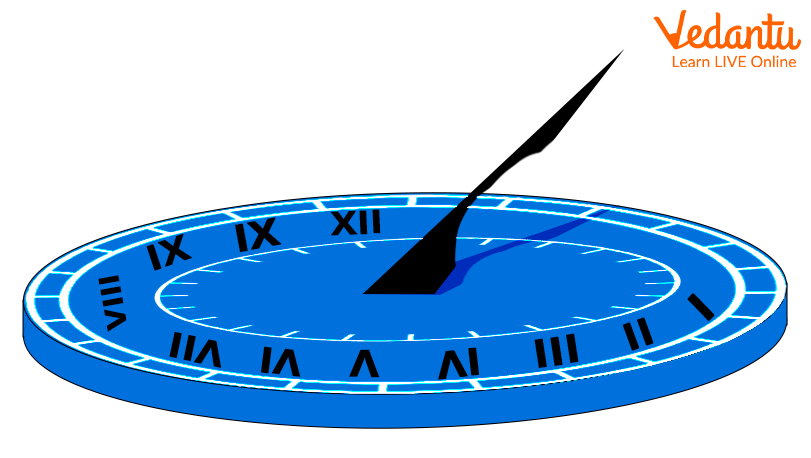
Sundial
Hourglass - An hourglass, also known as sandglass, sand-timer, sand-clock, or egg-timer, is a device that can measure the passage of time more accurately than obelisks or sundials. It comprises a couple of glass bulbs that are connected vertically by a slender neck, allowing the regulated flow of a substance (usually sand) from the upper bulb to the lower bulb.
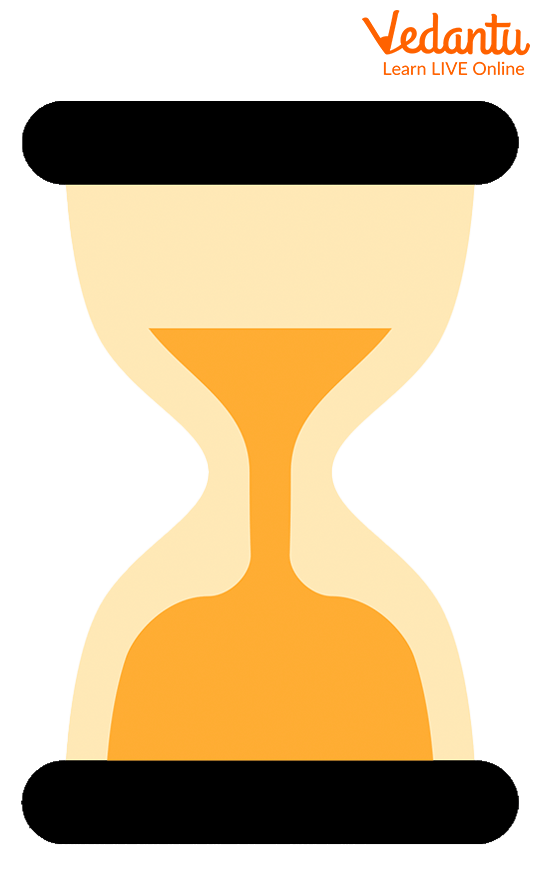
Hourglass
Water Clock - A water clock, also called clepsydra, is a timepiece that is used to measure time making use of the regulated flow of liquid (generally water) into or out of a vessel, where the quantity of liquid is then measured. The speciality of a water clock is that it can help a person tell the time at night as well, when the sun will fail to assist with the length and position of shadows.
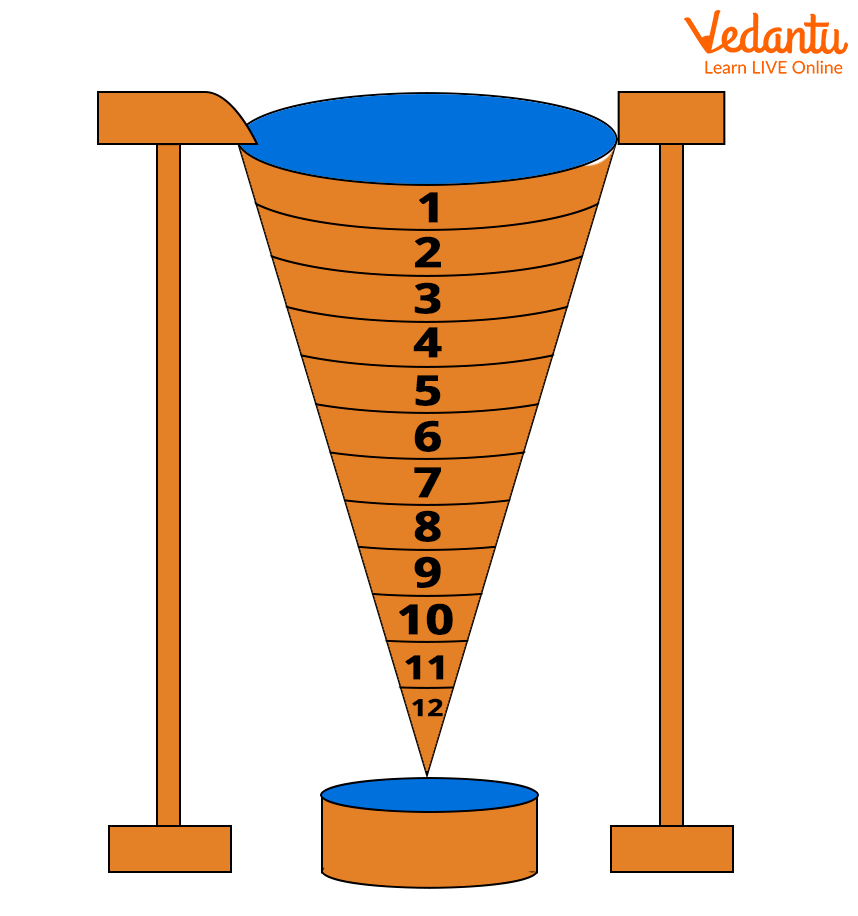
Water Clock
Do You Know?
There are certain devices called atomic clocks that can keep time most accurately. The best of these clocks in existence can even keep time within one second for 15 billion years! Impressive, isn’t it? They are used to measure time intervals when precision is of utmost importance.
Conclusion
Time intervals are the differences in time between any two points in time. Time intervals can be used once or regularly, depending on the necessity and purpose. There are various ways of measuring time intervals other than the use of watches and clocks, and some of these techniques are used even in the modern day as per convenience. It must be noted that in most cases, it is important to keep an attentive track of time intervals in order to avoid complications and miscalculations.
FAQs on What are Time Intervals?
1. What are some of the real life scenarios where using proper time intervals is a must?
Maintaining accurate time intervals should be given high priority in any case. However, a lack of attention in measuring time intervals can cause serious problems in certain cases, such as timely administration of medicines, processing of cement, while cooking, etc.
2. Which device measures time intervals most accurately?
Atomic clocks are known to be the most accurate keepers of time that are in existence. The best atomic clocks are known to keep time within a second for a span of 15 billions years.











